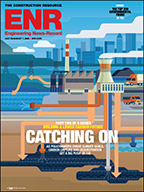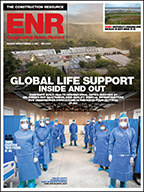The U.S. Green Building Council has made changes to its well-known Leadership in Energy and Environmental Design program. These changes respond to historical questions relating to energy performance of LEED certified projects. They not only contains hints of where the LEED program may be heading in the future, but also an indication of potential areas of growing legal risk and exposure.
LEED 3.0 Changes In June 2009, USGBC went live with its LEED 3.0 for New Construction. LEED 3.0 generally reflects a growing focus on carbon footprint related issues. The new LEED 3.0 contains a revamped credit point system, which reflects a significant increase in the percentage of points associated with energy efficiency and alternative energy sources from that in its predecessor, LEED 2.2. Additionally, LEED 3.0 increases the relative importance of some of the sustainable site credits that bear on density of development, site location, and use of transit-based transportation as opposed to automobile usage.

HUGHES
USGBC has also articulated “minimum program requirements” with which all LEED certified projects must comply. The new MPR that has generated significant commentary is that all LEED 3.0 projects must agree to provide extended reporting of utility usage for five years after project completion. LEED utilizes energy modeling as the basis for its submission and approval of energy efficiency credits. Some studies have questioned whether LEED certified buildings are performing as designed and modeled.
The Hammer of De-Certification As the discussion regarding the new energy/utility reporting evolved in the past few months, the potential hammer also emerged: the threat that a non-complying project could face de-certification. Some commentators have criticized LEED for some time that a structure could get a certification and then pay little attention to actual sustainable building performance after receipt of the initial certificate. The shift towards ongoing reporting coupled with the threat of potential de-certification may signal a move toward on-going building performance as occupying a more central role in certifications and approvals.
Liability Exposure with Green Buildings Construction lawyers have discussed potential liability exposure associated with green buildings for some time. Imposition of a new series of construction requirements—which are relatively new to certain players—coupled with limited contractual adjustments to address these risks, naturally carries some level of exposure. Using a third party independent voluntary program also adds a layer of complexity to these risks. These risks, however, are still relatively analogous to the typical construction document and code compliance issues posed by other types of projects.
De-certification carries a new level of risk and potentially extends periods of notice, statutes of limitations, and damages presented in claims. For example, if a project depends on achieving a certain certification as part of a lease, failing to reach that level could translate to a breach of the lease and thus implicates risk to the owner, and downstream to the builders and designers. Extending that risk past original occupancy through the threat of de-certification may dramatically increase the timing element of this risk, the chance of a breach, and the potential types and amounts of associated damages. De-certification may implicate similar increased liability exposure associated with threatened occupancy permits, issues regarding release of public bonds, compliance with zoning requirements, and other matters.
Conclusion LEED has continued to evolve to respond to questions and issues raised with green building projects. The latest changes increase the focus on energy efficiency and carbon footprint and point toward increasing importance of actual building performance. Informed industry players should stay attuned in particular to the threat of decertification as a significant increase in potential exposure that may be injected into LEED projects moving forward.




Post a comment to this article
Report Abusive Comment